-
 Bitcoin
Bitcoin $119300
1.07% -
 Ethereum
Ethereum $3730
3.87% -
 XRP
XRP $3.235
0.29% -
 Tether USDt
Tether USDt $1.000
0.00% -
 BNB
BNB $783.5
1.88% -
 Solana
Solana $188.7
0.25% -
 USDC
USDC $0.0000
-0.01% -
 Dogecoin
Dogecoin $0.2399
-0.44% -
 TRON
TRON $0.3157
2.37% -
 Cardano
Cardano $0.8254
1.94% -
 Hyperliquid
Hyperliquid $42.83
0.14% -
 Stellar
Stellar $0.4372
3.21% -
 Sui
Sui $3.859
4.91% -
 Chainlink
Chainlink $18.53
3.53% -
 Hedera
Hedera $0.2464
0.01% -
 Bitcoin Cash
Bitcoin Cash $519.8
2.46% -
 Avalanche
Avalanche $24.24
2.17% -
 Litecoin
Litecoin $113.7
0.73% -
 UNUS SED LEO
UNUS SED LEO $8.990
0.30% -
 Shiba Inu
Shiba Inu $0.00001390
0.21% -
 Toncoin
Toncoin $3.188
1.49% -
 Ethena USDe
Ethena USDe $1.001
0.02% -
 Polkadot
Polkadot $4.090
-0.91% -
 Uniswap
Uniswap $10.40
4.08% -
 Monero
Monero $326.6
3.12% -
 Bitget Token
Bitget Token $4.627
-0.42% -
 Pepe
Pepe $0.00001281
0.76% -
 Dai
Dai $1.000
0.01% -
 Aave
Aave $291.6
0.98% -
 Cronos
Cronos $0.1269
7.26%
How to unstake from a liquid staking protocol?
Liquid staking lets users stake crypto while keeping liquidity via tokenized assets like stETH, but unstaking involves steps like cooldown periods and gas fees.
Jul 20, 2025 at 06:49 pm
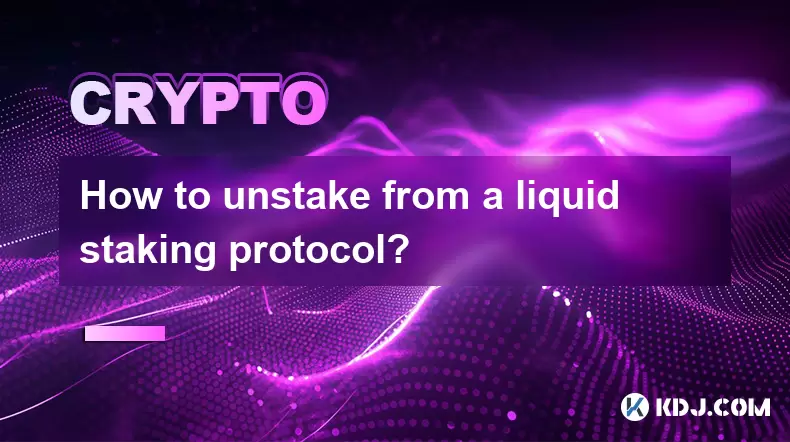
What is Liquid Staking?
Liquid staking is a process that allows users to stake their cryptocurrencies while maintaining liquidity. In traditional staking, assets are locked for a certain period, preventing users from accessing or using them elsewhere. Liquid staking protocols solve this issue by issuing tokenized representations of the staked assets. For example, when a user stakes ETH on a platform like Lido, they receive stETH in return, which can be traded, used as collateral, or transferred.
However, when a user decides to unstake, they must navigate a specific process to reclaim their original assets. The unstaking process varies depending on the protocol and the blockchain involved. Understanding how to unstake properly is crucial to avoid unnecessary delays or losses.
Why Would Someone Want to Unstake?
There are several reasons why a user might choose to unstake from a liquid staking protocol. Market volatility is one of the most common motivators. If a user anticipates a significant price drop or needs liquidity for another investment opportunity, they may opt to unstake their assets.
Another reason is protocol risk. Liquid staking platforms, while convenient, introduce an additional layer of risk compared to native staking. These risks include smart contract vulnerabilities, governance issues, or potential slashing events. Users who prefer to minimize exposure to third-party protocols may decide to unstake and switch to native staking methods.
How to Check Your Staked Assets
Before initiating the unstaking process, it's essential to verify the amount and type of assets currently staked. Most liquid staking platforms provide a dashboard or wallet integration that displays the user's staked balance. For instance, on Lido, users can connect their wallet and view their stETH balance along with the equivalent ETH value.
Users should also check for any pending rewards or fees associated with their staked position. Some platforms may require a cooldown period before unstaking is allowed. This cooldown can range from a few hours to several days, depending on the protocol's design and the underlying blockchain's parameters.
Steps to Unstake from a Liquid Staking Protocol
To begin the unstaking process, users must first connect their wallet to the liquid staking platform. This typically involves using wallets like MetaMask, Trust Wallet, or WalletConnect. Once connected, navigate to the staking section and locate the unstake or withdraw option.
Here are the general steps:
- Navigate to the staking dashboard and select the unstake option.
- Choose the amount of tokenized assets you wish to unstake (e.g., stETH).
- Confirm the transaction in your wallet, which will initiate the unstaking process.
- Wait for the cooldown period, if applicable, before the assets can be fully withdrawn.
- Claim your original assets (e.g., ETH) once the cooldown is complete.
Some platforms may automatically handle the conversion from the tokenized version back to the native asset, while others require a manual claim step.
Gas Fees and Transaction Times
Unstaking from a liquid staking protocol involves on-chain transactions, which means users must pay gas fees. These fees can fluctuate depending on network congestion. It's advisable to monitor gas prices and choose a time when fees are relatively low to minimize costs.
Transaction times also vary based on the blockchain's speed. For example, Ethereum-based transactions may take longer during high congestion, while PoS chains like Polygon or Binance Smart Chain might offer faster confirmations. Users should factor in these variables when planning their unstaking strategy.
Risks and Considerations
While unstaking is generally straightforward, there are several risks and considerations to keep in mind. One of the most important is the potential for slippage when converting tokenized assets back to the native coin. Slippage occurs when the price of the tokenized asset deviates from the native asset, which can result in a less favorable exchange rate.
Additionally, users should be cautious of impermanent loss, especially if they are unstaking from a liquidity pool or providing yield farming services simultaneously. This phenomenon can lead to reduced returns compared to simply holding the asset.
Lastly, always ensure that you are interacting with the official protocol website to avoid phishing scams or fraudulent platforms that mimic legitimate services.
Frequently Asked Questions
Q: Can I unstake anytime, or are there specific windows for unstaking?
A: Most liquid staking protocols allow users to unstake at any time. However, some may implement cooldown periods or batch unstaking mechanisms to manage liquidity on-chain.
Q: What happens if the value of my tokenized staked asset drops significantly?
A: Tokenized assets like stETH are designed to maintain a 1:1 peg with the underlying asset. However, temporary deviations can occur due to market conditions. Always monitor the asset's value before unstaking.
Q: Are there any alternatives to unstaking if I need liquidity?
A: Yes, some platforms allow users to use their tokenized staking assets as collateral for loans or other DeFi activities. This enables liquidity without the need to unstake.
Q: Do I lose staking rewards during the unstaking process?
A: Rewards typically accrue until the moment of unstaking. However, during cooldown periods, no additional rewards are earned. It's important to factor this into your decision.
Disclaimer:info@kdj.com
The information provided is not trading advice. kdj.com does not assume any responsibility for any investments made based on the information provided in this article. Cryptocurrencies are highly volatile and it is highly recommended that you invest with caution after thorough research!
If you believe that the content used on this website infringes your copyright, please contact us immediately (info@kdj.com) and we will delete it promptly.
- Bitcoin, Jim Cramer, and the US Deficit: A Wall Street Story
- 2025-07-25 10:30:11
- TGEs, Scalability & Privacy Tech: Decoding the Future of Blockchain
- 2025-07-25 10:30:11
- Ben Askren, FUNKY Memecoin, and the Fallout: A New York Minute
- 2025-07-25 10:50:11
- TRON, Crypto Payroll, and Stablecoins: A New York Minute on the Future of Finance
- 2025-07-25 08:30:11
- WazirX, Revote, and Crypto Unlock: A New York Minute on the Latest Developments
- 2025-07-25 06:50:11
- Hong Kong Stablecoin Regulation: Navigating the Hype and Hurdles
- 2025-07-25 08:30:11
Related knowledge
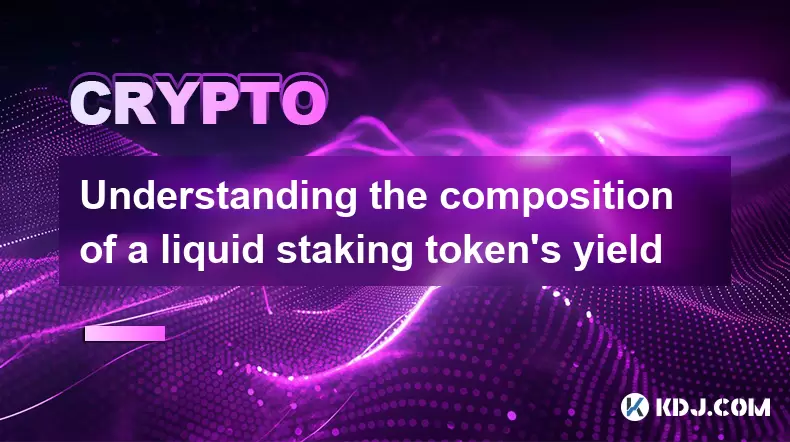
Understanding the composition of a liquid staking token's yield
Jul 20,2025 at 09:07am
What Is a Liquid Staking Token?A liquid staking token is a representative asset issued to users who stake their native cryptocurrency on a proof-of-st...
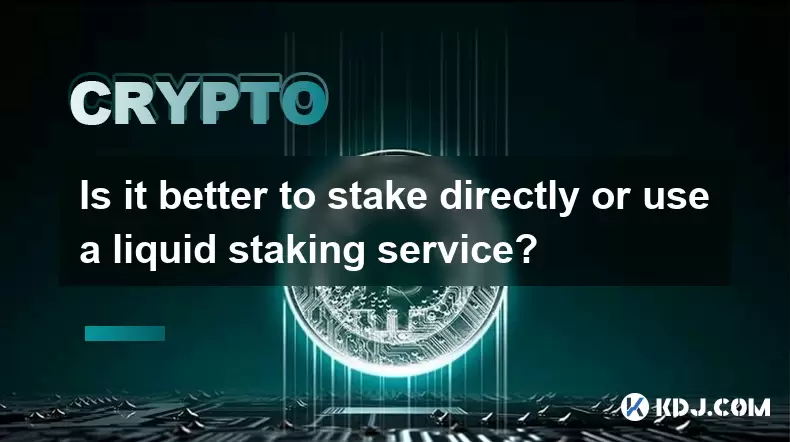
Is it better to stake directly or use a liquid staking service?
Jul 22,2025 at 08:21pm
Understanding the Basics of StakingStaking in the context of blockchain and cryptocurrency refers to the process of locking up digital assets to suppo...
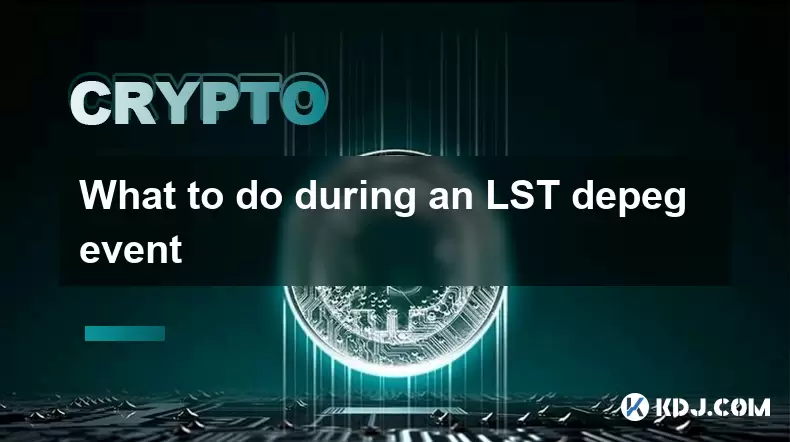
What to do during an LST depeg event
Jul 20,2025 at 04:57pm
Understanding LST Depeg EventsAn LST (Liquid Staking Token) depeg event occurs when the token, which is typically pegged to the value of the underlyin...
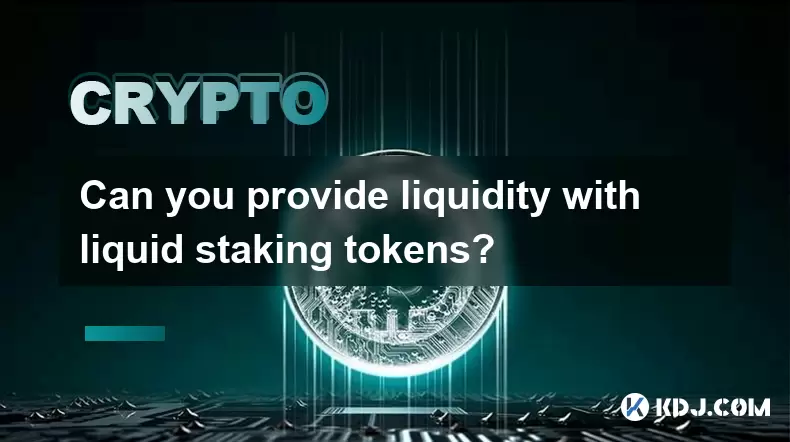
Can you provide liquidity with liquid staking tokens?
Jul 22,2025 at 10:22am
Understanding Liquid Staking TokensLiquid staking tokens (LSTs) are derivative tokens that represent staked assets on a proof-of-stake (PoS) blockchai...
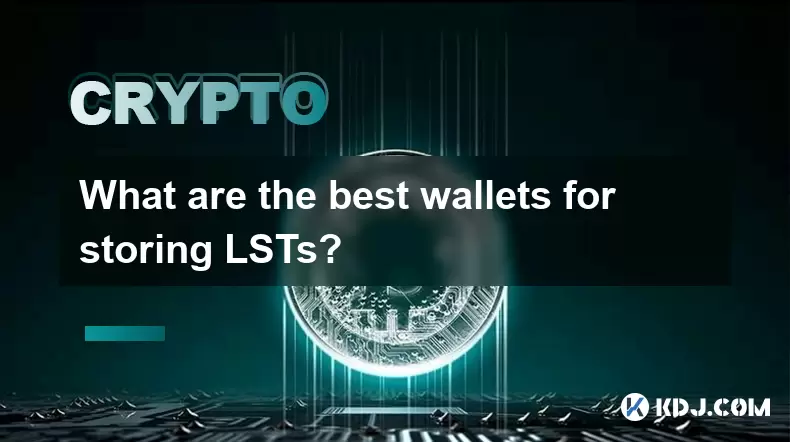
What are the best wallets for storing LSTs?
Jul 21,2025 at 03:14pm
Understanding LSTs and the Need for Secure StorageLSTs, or Liquid Staking Tokens, are derivative tokens representing staked assets on a blockchain. Wh...
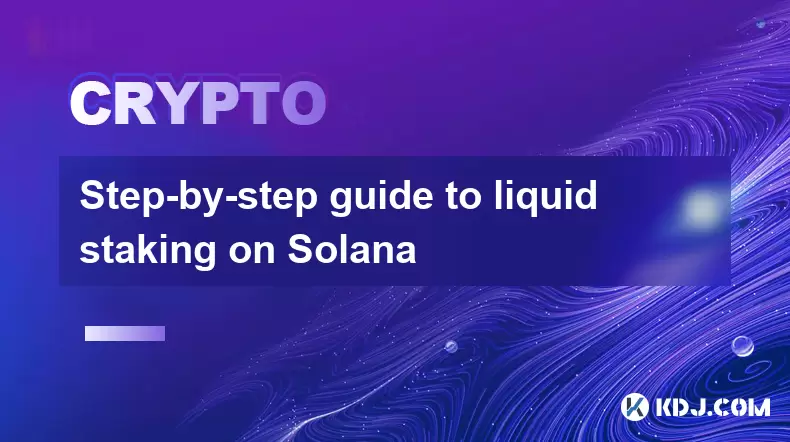
Step-by-step guide to liquid staking on Solana
Jul 20,2025 at 06:42am
What is Liquid Staking on Solana?Liquid staking is a mechanism that allows users to stake their cryptocurrency while retaining liquidity through the i...

Understanding the composition of a liquid staking token's yield
Jul 20,2025 at 09:07am
What Is a Liquid Staking Token?A liquid staking token is a representative asset issued to users who stake their native cryptocurrency on a proof-of-st...

Is it better to stake directly or use a liquid staking service?
Jul 22,2025 at 08:21pm
Understanding the Basics of StakingStaking in the context of blockchain and cryptocurrency refers to the process of locking up digital assets to suppo...

What to do during an LST depeg event
Jul 20,2025 at 04:57pm
Understanding LST Depeg EventsAn LST (Liquid Staking Token) depeg event occurs when the token, which is typically pegged to the value of the underlyin...

Can you provide liquidity with liquid staking tokens?
Jul 22,2025 at 10:22am
Understanding Liquid Staking TokensLiquid staking tokens (LSTs) are derivative tokens that represent staked assets on a proof-of-stake (PoS) blockchai...

What are the best wallets for storing LSTs?
Jul 21,2025 at 03:14pm
Understanding LSTs and the Need for Secure StorageLSTs, or Liquid Staking Tokens, are derivative tokens representing staked assets on a blockchain. Wh...

Step-by-step guide to liquid staking on Solana
Jul 20,2025 at 06:42am
What is Liquid Staking on Solana?Liquid staking is a mechanism that allows users to stake their cryptocurrency while retaining liquidity through the i...
See all articles

























































































